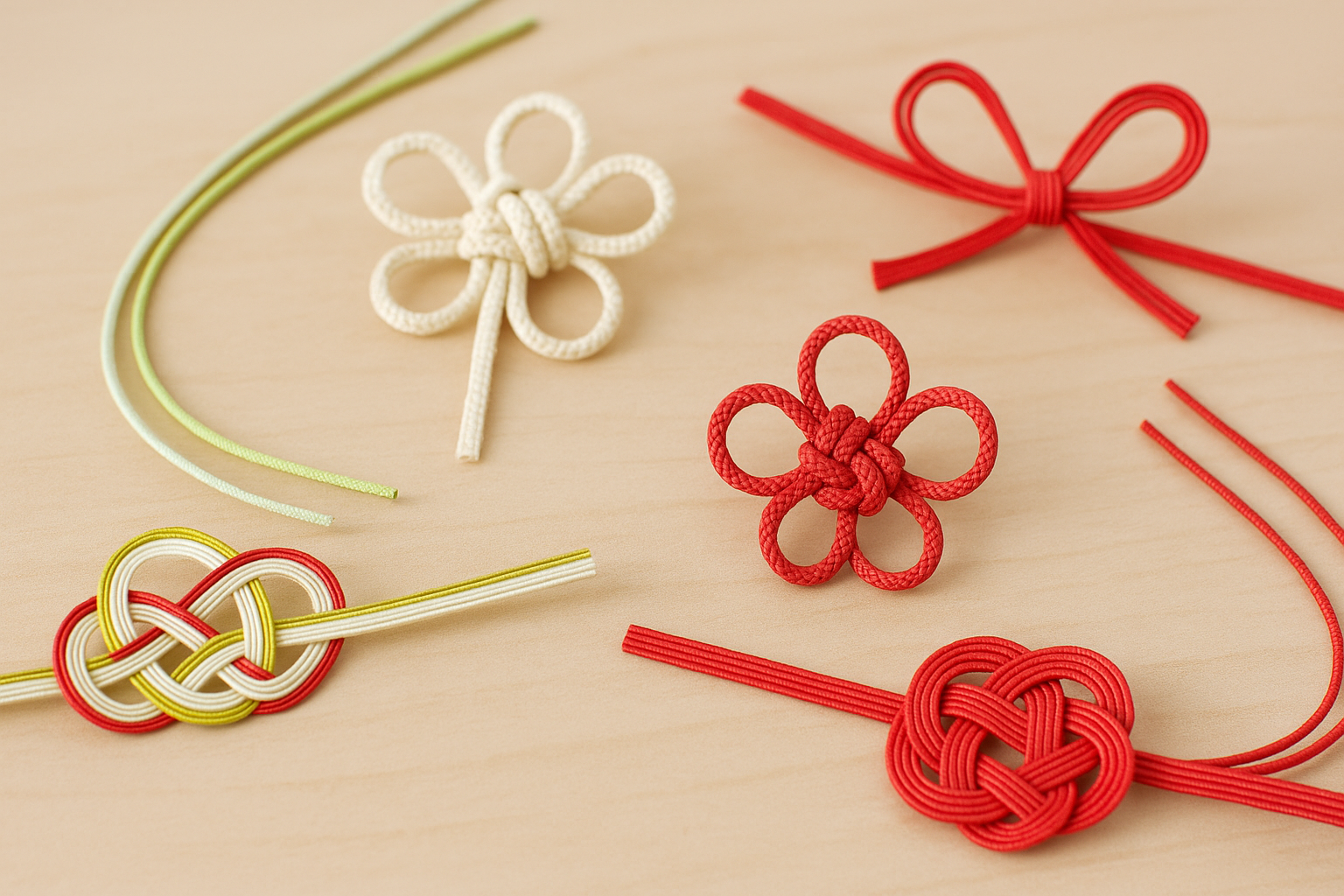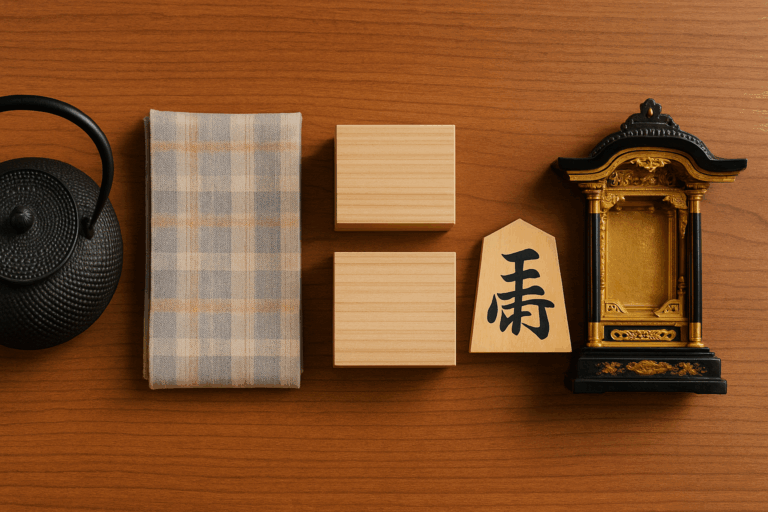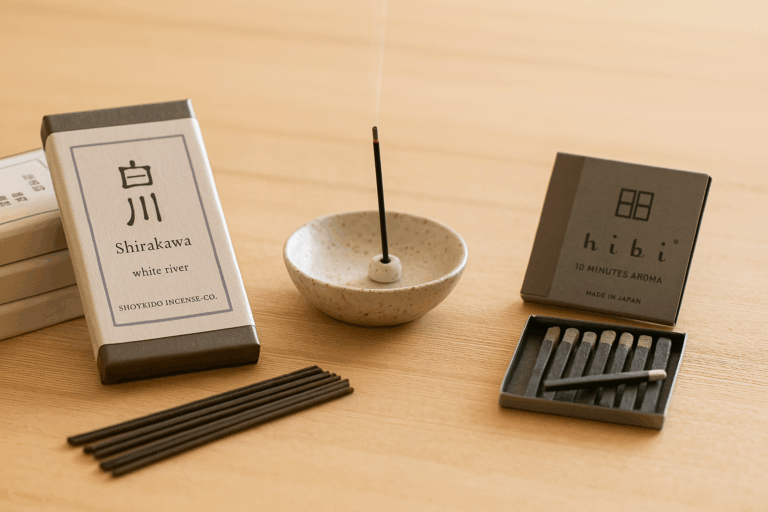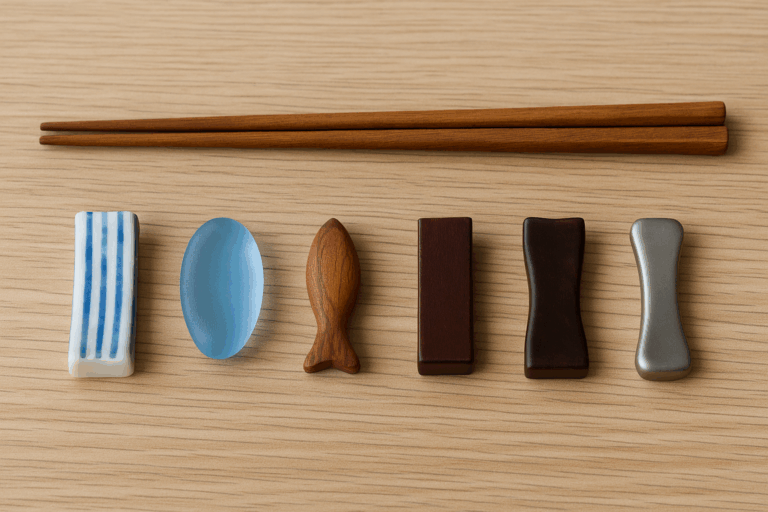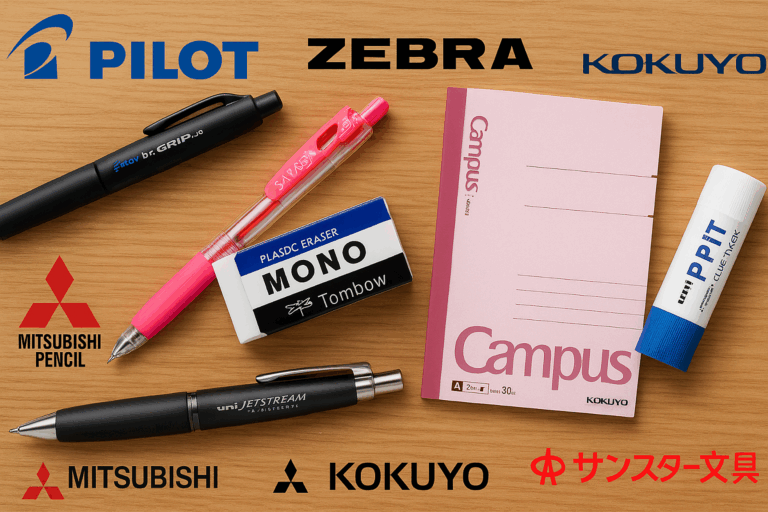Mizuhiki: Discover the Meaningful Beauty of Traditional Japanese Decorative Knots
What is Mizuhiki?
Mizuhiki is a traditional Japanese decorative cord made by twisting washi paper into thin strings and coating them with starch and dye. Originally used to wrap gifts and envelopes, it is now appreciated as a form of craft art—ranging from accessories to interior decorations.
The name “mizuhiki” comes from the practice of moistening the cords before use to make them more pliable.(mizu=water)
The Deeper Meaning Behind Mizuhiki Knots
Every knot in mizuhiki carries its own cultural meaning. For example:
Chō Musubi (Butterfly Knot): For Celebrations That Repeat
The Chō Musubi, or Butterfly Knot, is a simple, elegant knot that can be easily tied and untied. This reversible quality makes it ideal for occasions that happen more than once, such as birthdays, thank-you gifts, or baby showers.
The visual lightness of the bow-like form symbolizes joy, warmth, and casual celebration, making it a versatile choice for daily and seasonal gifting.
Kiri-musubi: The Knot That Should Never Be Untied
The Kiri-musubi, or “tight knot,” is a traditional Japanese mizuhiki knot designed to be tied once and never untied. Its strong, secure design symbolizes finality and one-time-only occasions, making it a common feature on gifts or envelopes for events that are not meant to be repeated—such as weddings, hospital discharges, or memorial services.
Awaji Musubi (Awaji Knot): Connection and Longevity
The Awaji Musubi is one of the most traditional mizuhiki knots, known for its strong interlocking structure. Once tied, it is difficult to untie—symbolizing lasting bonds and deep connections. This knot is commonly used on gifts for weddings, engagements, and other important milestones.
Its simplicity and strength make it a favorite for expressing sincere wishes for enduring relationships and long life.
Ume Musubi (Plum Blossom Knot): A Symbol of Good Fortune and Elegance
The Ume Musubi is a decorative mizuhiki knot shaped like a plum blossom, a flower that represents perseverance, renewal, and good luck in Japanese culture. Often used on gifts for celebrations such as weddings or New Year’s, this knot embodies beauty, resilience, and hope.
Its rounded, symmetrical form makes it a popular design for both modern and traditional crafts, including jewelry, envelopes (noshi), and souvenirs.
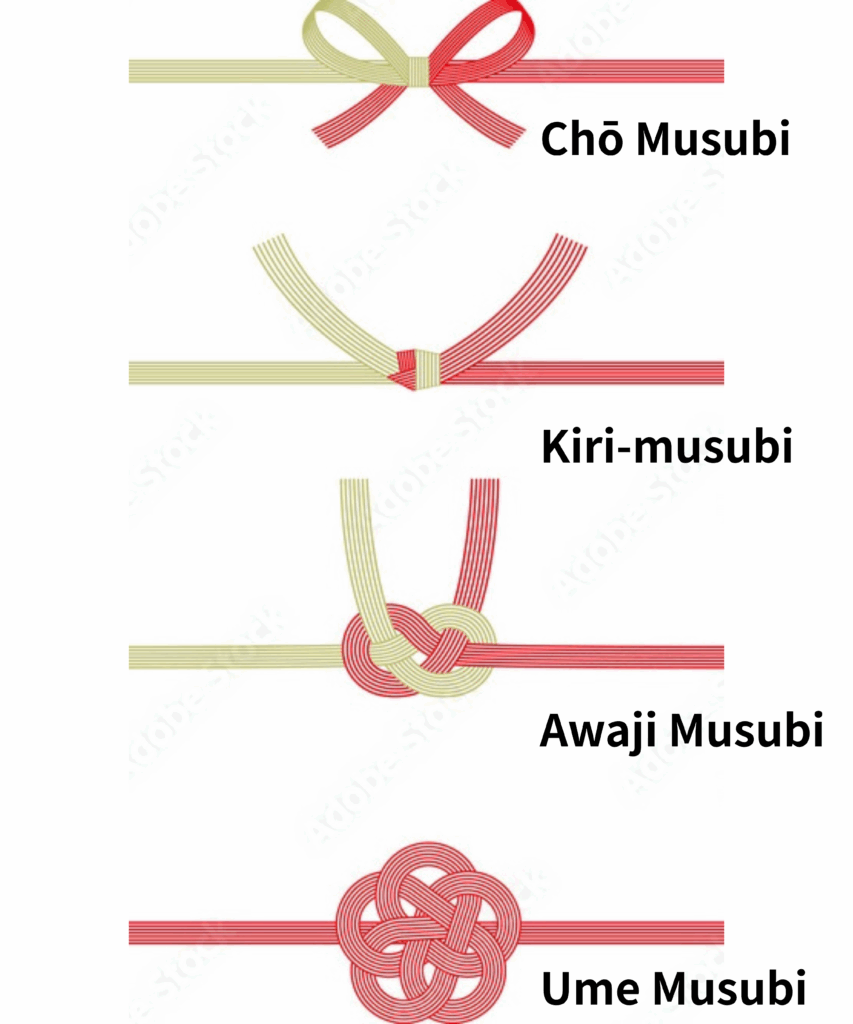
This meaningful knot carries deep cultural significance, reminding both giver and receiver of the weight and sincerity behind the gesture.
Understanding the symbolism of each knot helps deepen your appreciation for this beautiful craft.
Traditional Uses of Mizuhiki in Japan
- Wedding envelopes and ceremonial gifts
- New Year’s greeting cards and money envelopes
- Celebrations like baby births or anniversaries
- Gift wrapping by department stores and artisans
Mizuhiki remains a respected handcraft, especially in premium gift presentations.
Modern Mizuhiki Designs (Featured Instagram Creators)
Today, mizuhiki is also found in modern jewelry and home decor. Artists are bringing fresh perspectives to this ancient art.
What You Need to Start Mizuhiki Crafting
If you’re inspired to try mizuhiki yourself, here are the basic materials you’ll need:
- Mizuhiki cords: Available in sets of 30 or 50, in various colors and thicknesses. Beginners should choose soft types for easier handling.
- Flat-nose pliers and tweezers: For shaping intricate details
- Scissors and glue: To finish and secure the ends
Recommended Books for Learning Mizuhiki
Several beautifully illustrated books are available to guide you through the process—even if you don’t read Japanese fluently.
Easy Mizuhiki Crafts: Cute Money Envelopes, New Year Decorations, Gift Wrapping & Accessories
Mizuhiki for Beginners: Basic Knots and Easy Accessories
Extra Sections to Enhance the Experience
🎁 Gift Ideas Using Mizuhiki
- Add a plum blossom knot charm to a wedding gift
- Wrap souvenirs for international friends with a Japanese flair
- Use mizuhiki in New Year decorations and greeting cards
Conclusion: A Cultural Expression of Connection
Mizuhiki is more than just a decorative string—it represents the Japanese spirit of connection, intention, and grace. The more you learn about the meanings behind each design, the more you’ll appreciate the tradition it carries.
Why not bring a piece of this beauty into your daily life?
Start with a single strand and discover the art of mizuhiki—an elegant symbol of Japan’s rich cultural heritage.
